So often we talk about how to ride the corner, how to deliver our ropes and how to get in time with a steer—but so often, we forget essential adjustments in team roping gear.
Without having the basic details of horsemanship and equipment down, we might be sabotaging ourselves before we ever leave the box. Paying attention to things like rein, stirrup, and tie-down length can make a little difference that goes a long way in your heeling.
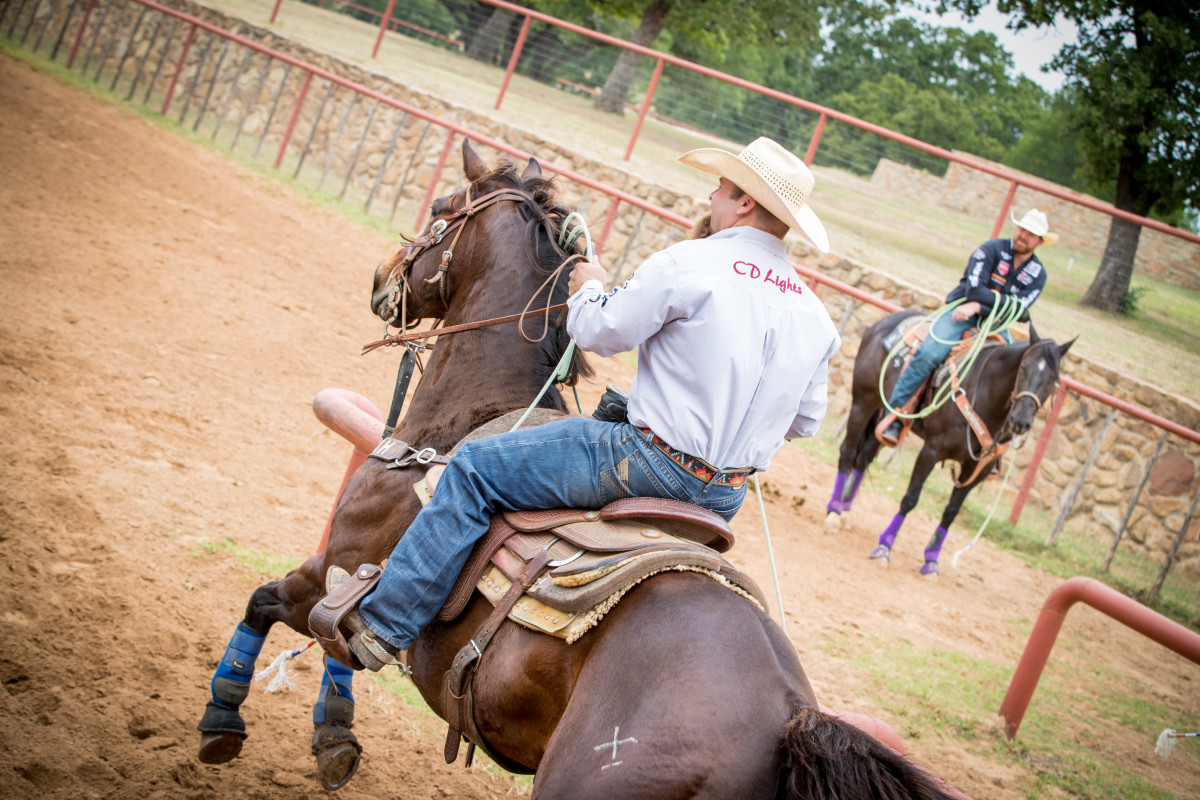
1. Rein Length
I’ve worked on this with nearly everybody at my schools. I want to find a good balance in my reins. I don’t want them to be too short where I’m holding on my horse or too long where I’m scrambling and having to make big moves to get a reaction. I want my rein length somewhere in the middle. I would like to be able to steer my horse without having to make a big motion with my left hand, which could cause a delayed reaction and too much movement to confuse him. Generally speaking, I want my bridle reins in the middle of my upper body, about even with my saddle horn or a little behind it in the box. That lets me stay square starting in the box and continuing throughout the run. I don’t need to pick up on my reins to help my horse score, but I can have a good balance with my reins there. If my horse takes a step, I don’t have to pick up or make a big move and just hold my hand steady. If I have a horse wanting to get too straight, I’ll tighten up my left rein, but rarely will I ever shorten my right rein and move my horse’s nose over.
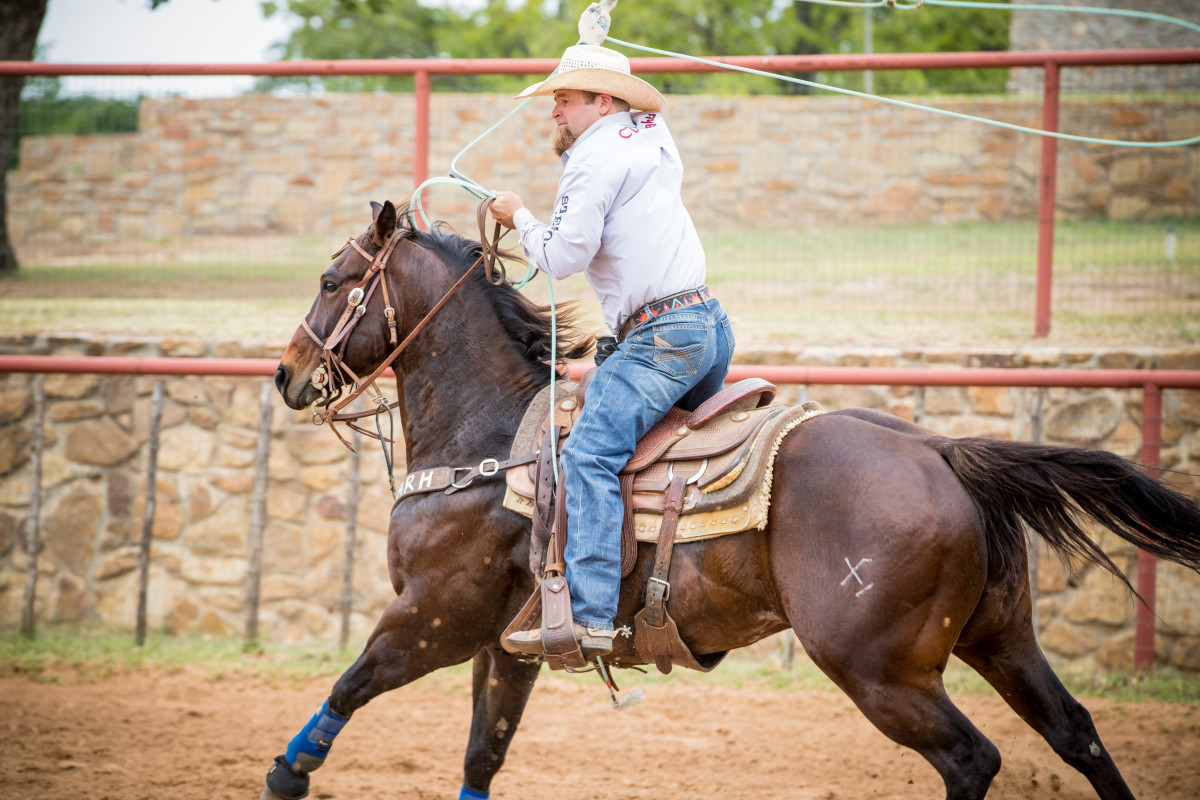
2. Balance Between Your Hands
The balance between your hands goes along with bridle reins. For me, heeling, a lot of times I see ropers have too much rope between their hands. You don’t want your hands too close together and touching so you don’t have any range. You’ve got to have enough in your hands, though, that going down the arena, you can establish your position and get your rope fed out. A lot of heelers, when they feed their ropes coming through the corner, take big strong swings and squeeze their horses and throw their bridle reins to them. Horses look like they’re accelerating into the corner, but you can fix that by having your rope fed out with what we have in our hands. I want to keep the steer between my shoulders coming into the corner, and if I can have my hands about shoulder width apart, that allows me to not have to compensate to go to the feet. I don’t have to come out of my swing to deliver. If my bridle reins are too long or I have too much between my hands, when my right hand goes down my left hand will come back to find the balance. The biggest thing is making sure you’ve established your swing and balance.
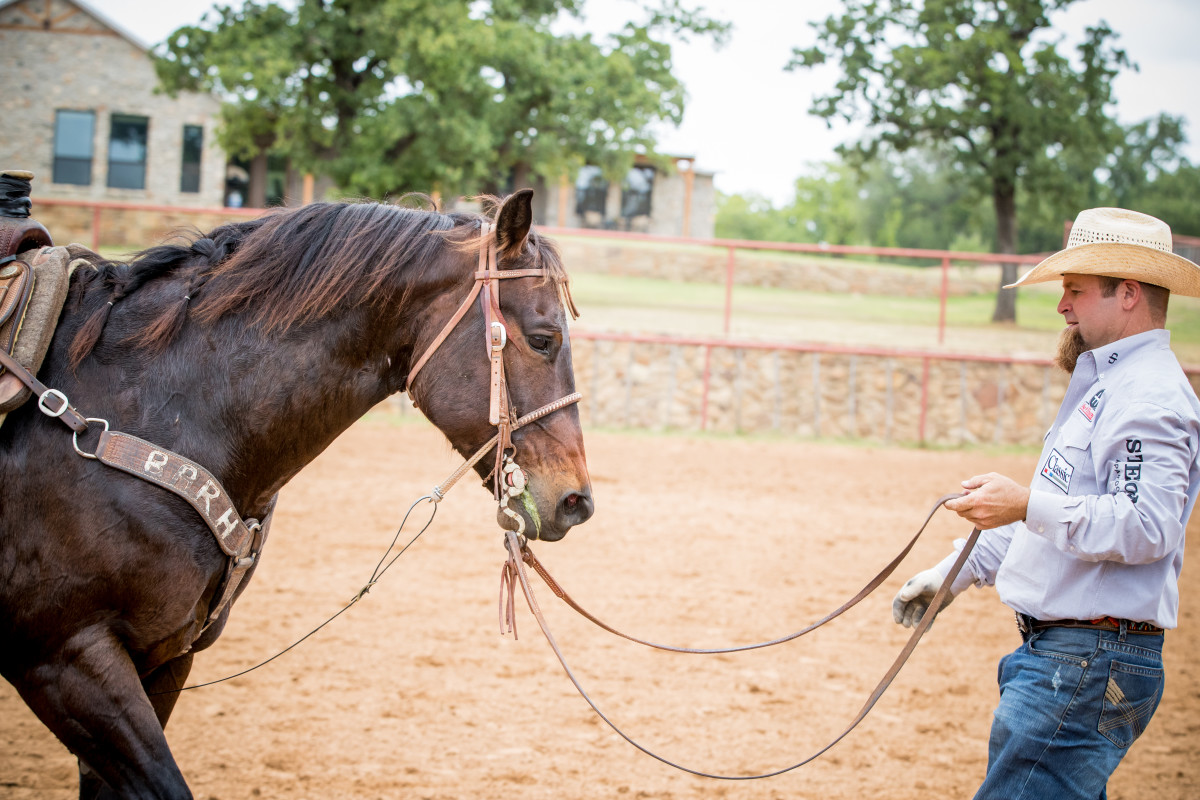
3. Tie Down
Most of the time, a tie down is a balancing point for a horse. I like mine reasonably long. I like not depending on a tie down. It’s something I want to use to help my horse balance himself on the stop and for the jerk more than bringing his head down to try slow him down. That’s a misconception with a tie down: people want to tie their horses’ head down to slow them. But, if you tie their heads down where they can’t run, they’re in an awkward position. It locks their front end and will cause their hind end to sidepass around because they can’t lift their front left shoulder coming around the corner. Some need it a little longer and some need it shorter, but it drives me nuts to see one with his head tied down so far that he can’t see where he’s going.
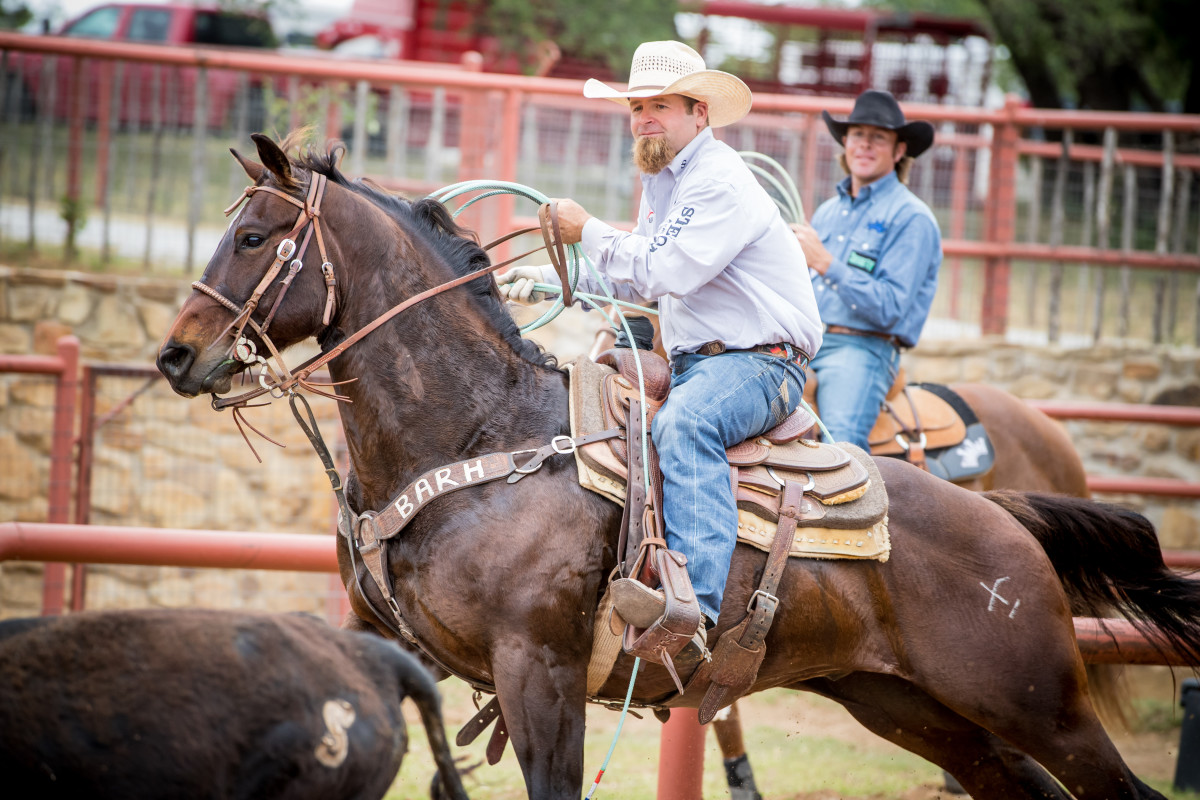
4. Stirrup Length
I like my stirrups a little shorter than some people do. The one misconception for heeling is to “Get up, Get up, Get up” in your saddle. But I don’t want any daylight between myself and the saddle seat. I want to be in contact with the saddle. If our stirrups are too long, we lose contact with our thighs. We’re like a pendulum up there—back and forth. If we shorten our stirrups, we can use our feet better. Our knees are bent and we can have contact around our knees and thigh area and on the balls of our feet and on the seat of our saddle.
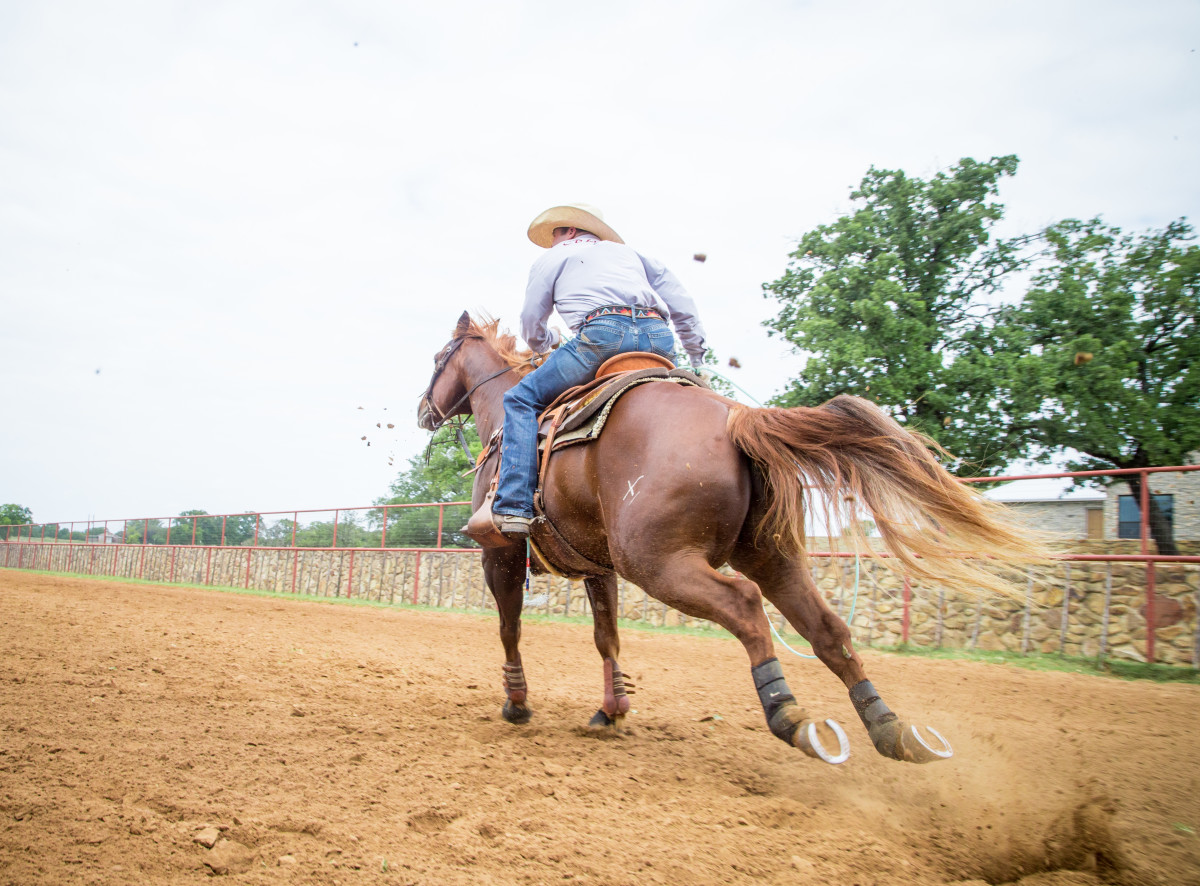
5. Spurs?
Generally speaking, if you’re uncomfortable using spurs, then you probably shouldn’t. If your horse is really touchy and you’re squeezing too much, or losing your balance in the corner or when you throw, spurs might not help your cause. If you’re trying a horse, and you’re not comfortable using your feet, that’s another good time to not use spurs.
Spurs can be an important part of your run. When you’re going down the arena, you can help your horse with quite a few cues. I ride spur on everything I have. If you’re riding properly, you aren’t just kicking the whole time and you’re using your feet at the proper time. Spurs help us move our horse without kicking or using our bridle. We can establish our width with our left spur, and that doesn’t mean kicking. I’m more likely to put my left spur in him with slight pressure than to really boot him. That helps him move over to the right. Also, through the corner sometimes, if I have a horse that’s wanting to get too far around the steer, I’m able to use my right foot and bring my horse back to the inside.











